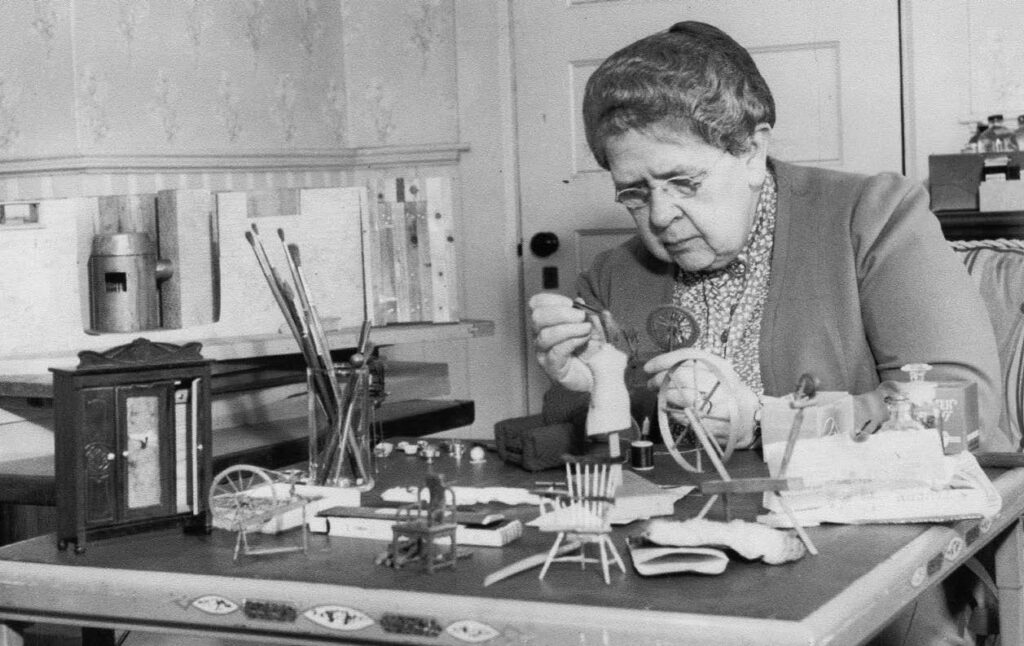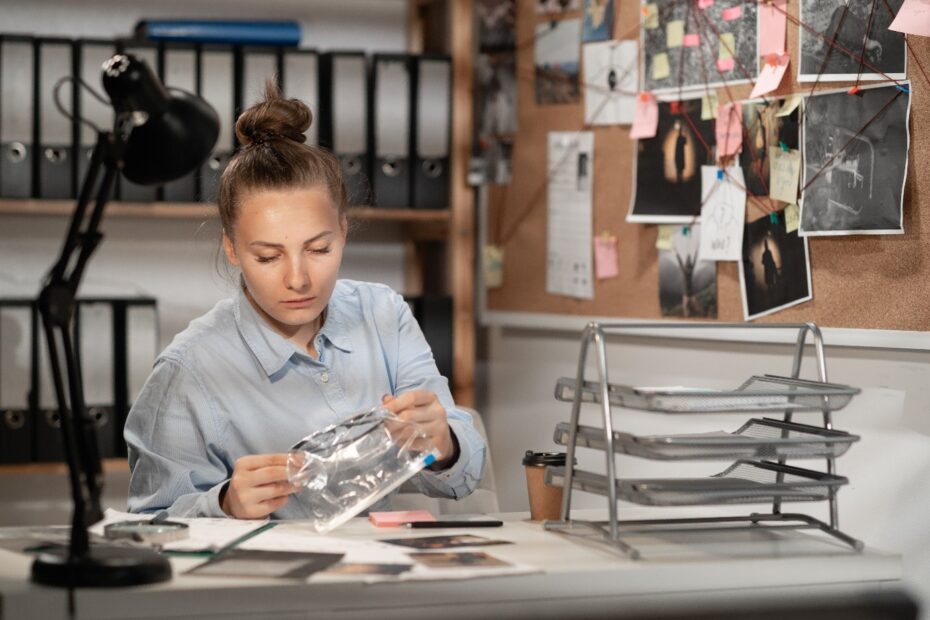When most people think of STEM careers, they imagine high-tech labs, complex algorithms, or futuristic engineering. Rarely do they think of crime scenes, DNA traces, or the chemical composition of unknown substances. Yet some of the most powerful applications of science and technology happen not in front of a screen, but behind the scenes – in forensic laboratories, toxicology reports, and ballistics investigations.
These are the hidden engines of justice and security – disciplines where science meets public safety. Despite their crucial role, fields like forensic science and criminalistics remain underrepresented in mainstream STEM discussions, and women are still navigating deep-rooted gender gaps, especially in leadership and innovation roles.
Forensic STEM needs women
Behind every solved case is a chain of scientific decisions: a toxicologist identifying a lethal substance, a ballistics expert analysing the trajectory of the bullet, a DNA analyst linking a suspect to a scene… and many more. These aren’t scenes from television dramas. This is real science with real-world impact, and it demands precision, integrity, and sharp analytical minds.
Yet despite growing interest from young women, many are still steered away from these STEM paths early – told they’re “too difficult”, “too technical”, or simply “not for girls”. Those who do enter the field often face another challenge: being seen as assistants rather than scientists.
But the data tells a different story. Women currently make up over 70% of forensic science technicians in the U.S. – one of the only STEM fields where women are a majority at the entry level. And yet, the moment you look at leadership roles, published research, or forensic innovation, the numbers flip: men dominate the top tiers. The message? Women are doing the work, but not getting the recognition or opportunities to shape the field’s future. The consequence is more than unfair – it’s a missed opportunity. Women bring essential perspectives to areas like victim-centred forensics (victimology), ethical evidence handling, and the design of systems that protect both justice and privacy. The forensic STEM world doesn’t just need more women. It needs more women leading, researching, and transforming the science of security.
Forensic science = STEM in action
Few fields capture the full power of STEM like forensic science. It brings together disciplines that are too often kept in separate boxes. Biology and chemistry drive DNA analysis, toxicology, and serology. Physics explains the trajectory of bullets and the geometry of blood spatter patterns. Mathematics and statistics are used to calculate the probability of a DNA match or to assess the reliability of fingerprint evidence. And engineering and technology play a growing role in digital forensics, forensic imaging, and crime scene reconstruction.
This is STEM not in theory, but in action – science that responds to real-life problems with real-world consequences.
And yet, despite its deeply scientific nature, forensic work is rarely marketed as a STEM pathway to girls. It’s often placed under “criminal justice” or “law enforcement” categories, separating it from the scientific identity it deserves. As a result, many girls with an interest in science don’t realize that a career in forensics could be their path – combining analytical skills with meaningful societal impact. This invisibility doesn’t just limit career options. It affects how seriously young women are taken when they do enter the field. When we fail to present forensic science as a core part of STEM, we reinforce the idea that it’s a side branch – not a place for innovation, leadership, or long-term scientific careers. And that needs to change!
Women who rewrote the rules of forensic science
If forensic science is truly STEM in action, why don’t we hear more about the women who built it?
The truth is, they’ve been there all along. Before forensic science became the subject of crime shows and university degrees, a few bold women were already doing the work – and doing it brilliantly.
Take Frances Glessner Lee, for example. In an era when women weren’t even welcome in courtrooms, she built detailed miniature crime scenes – not as a hobby, but as a groundbreaking training tool for homicide investigators. Her models, known as the Nutshell Studies of Unexplained Death, are still used today. She didn’t just teach detectives how to look – she taught them how to see.

Source: https://www.harvardmagazine.com/2005/09/frances-glessner-lee-html
Or Margaret Pereira, who spent her career making blood speak. A pioneer in forensic serology, she developed new ways to analyse and interpret blood evidence, long before DNA testing existed. Her work laid the groundwork for modern crime labs and changed how justice is done in the UK and beyond.

Source: https://www.theguardian.com/science/2017/jan/26/margaret-pereira-obituary
Then there’s Dr. Candice Bridge – a modern-day force in forensic chemistry. As one of the first women in the U.S. to earn a PhD in forensic science, she’s not only innovating in chemical analysis but actively mentoring the next generation of scientists from underrepresented communities. She advocates loudly for greater diversity and inclusion in scientific research.

Source: https://www.ucf.edu/news/ucf-forensic-science-helps-set-standards-educate-public-on-real-csi/
These aren’t just names in textbooks. They are proof that women have always belonged in forensic STEM – not just participating, but pioneering.
A field built on justice, yet not always just
For a profession rooted in truth, evidence, and justice, forensic science still carries deep structural inequalities.
Women may make up the majority of entry-level forensic technicians – but that doesn’t mean equality. Men are still more likely to be promoted, hold leadership positions, publish research, and lead high-profile investigations. In fact, studies show that even in majority-female forensic workplaces, men earn more on average and are more often seen as the “default experts” in courtrooms and media.
There’s also the emotional toll. Female forensic professionals – especially those working with sensitive cases – often report higher levels of stress, vicarious trauma, and burnout, yet receive less support than their male colleagues. And when they speak up about bias or inequity, they risk being seen as “difficult” rather than as professionals advocating for change.
These aren’t isolated problems – they are systemic. And ignoring them undermines not only gender equality but the credibility and ethical standards of forensic science as a whole.
Why women matter in forensic STEM – and why now
It’s not just about fairness. It’s about better science, better justice, and a safer society.
Women bring essential perspectives to forensic science, especially in areas that intersect with trauma, vulnerability, and human complexity. In fields like sexual assault forensics, domestic violence investigation, or victim identification, having women involved isn’t optional – it’s critical. Their presence often leads to more sensitive handling of evidence, deeper understanding of context, and approaches that respect both accuracy and dignity.
But this isn’t just about empathy. It’s about innovation. Research shows that diverse scientific teams solve problems faster and more creatively. When women contribute to forensic methods, case analysis, or ethical frameworks, they help expose blind spots and challenge outdated practices – making the system stronger for everyone.
And then there’s trust. Forensic science is often the final word in court. When half of society doesn’t see itself represented in the labs behind that verdict, faith in the system suffers. Representation builds credibility: in science, in justice, and in the institutions that depend on both.
If we want a future where forensic science is more advanced, more ethical, and more human – then we need more women not just in the field, but leading it.
Toward a more equal future in forensic STEM
Forensic science is more than microscopes and lab reports. It’s about truth, trust, and accountability. And if we want those values to shape the future of this field, we need the people driving it to reflect them.
Women have already proven they belong in forensic STEM – as scientists, leaders, and changemakers. But belonging isn’t enough. What’s needed now is recognition, opportunity, and structural change. That means dismantling gender bias, supporting career advancement, and ensuring that young women see these careers not just as possible, but as powerful.
The 4equality project is one step toward that future. By building tools, mentorship, and awareness around gender bias in male-dominated, future-oriented sectors, it helps open doors that too often remain closed.
The science of justice can’t afford to leave anyone behind. Especially not the women ready to lead it forward.
Bibliography:
- Barbaro, A. (2019). Women in forensics: An international overview. Forensic Science International: Synergy, 1, 137–139.
- Michigan State University. (2016, August 18). Female forensic scientists more stressed than males. MSU Today. https://msutoday.msu.edu/news/2016/female-forensic-scientists-more-stressed-than-males/ (access 2 June 2025)
- Penn State University. (2012, August 6). Probing question: Do women dominate the field of forensic science? Penn State News. https://www.psu.edu/news/research/story/probing-question-do-women-dominate-field-forensic-science/ (access 2 June 2025)
- Rushton, C. (2014). Why more women are pursuing forensic science graduate degrees over other STEM majors. Marshall University Forensic Science Center. https://www.marshall.edu/forensics/files/Rushton-STEM-Poster-10-Feb-CR-edit.pdf (access 2 June 2025)
- Ward, J., Johnson, R. N., & Wilson-Wilde, L. (2019). Gender equity: How do the forensic sciences fare? Australian Journal of Forensic Sciences, 51(Suppl. 1), S263–S267. https://doi.org/10.1080/00450618.2019.1568556 (access 2 June 2025)

 Български
Български Ελληνικά
Ελληνικά Polski
Polski Português
Português Română
Română